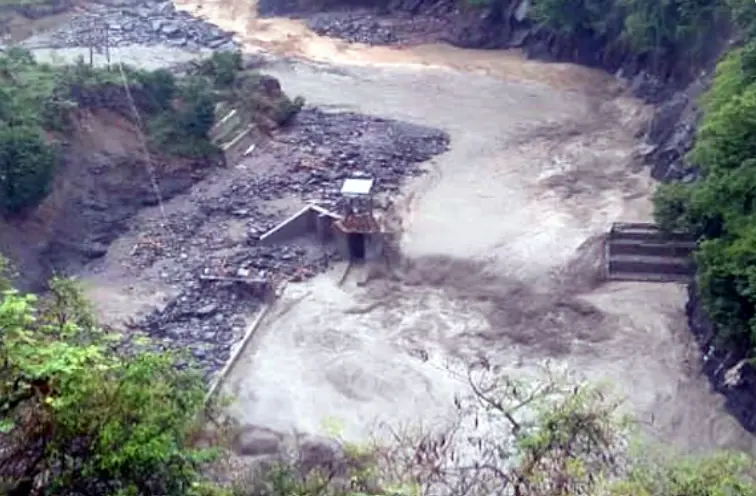
Torrential rains have devastated Himachal Pradesh, claiming 43 lives and triggering flash floods, landslides, and cloudbursts
I. The Himachal Monsoon Unleashed: A State in Crisis
Since the onset of the monsoon on June 20, Himachal Pradesh has witnessed a relentless barrage of extreme weather events. Cloudbursts, flash floods, and landslides have ravaged the districts of Mandi, Kangra, Kullu, and Sirmaur, leaving behind a trail of destruction. According to the State Disaster Management Authority (SDMA), 91 people have died since the rains began, with 43 fatalities directly linked to rain-triggered disasters.
Table of Contents
Entire villages have been cut off as swollen rivers washed away bridges and roads. In Mandi district alone, over 150 homes, 106 cattle sheds, and 14 bridges were destroyed. The Patikari Hydroelectric Project was completely wiped out by a flash flood, underscoring the vulnerability of infrastructure in ecologically sensitive zones.
The yellow alert issued by the Meteorological Department remains in effect, with warnings of continued heavy rainfall until July 16. Rescue operations are ongoing, with NDRF and SDRF teams deployed across high-impact zones. Over 1,500 ration kits have been air-dropped, and temporary shelters have been set up for displaced families.
II. Human Stories: Courage, Loss, and Resilience
Amid the devastation, stories of extraordinary bravery have emerged. In Mandi, a father-daughter duo saved four lives during a cloudburst, pulling people from debris and navigating chest-deep sludge to safety. Doctors trekked 14 km on foot to reach a stranded 78-year-old patient, exemplifying the grit of frontline responders.
The emotional toll is immense. Survivors recount the terrifying night of June 30, when water and debris surged into homes, sweeping away loved ones. Relief camps now house hundreds, many of whom have lost everything from homes to livestock and livelihoods.
Chief Minister Sukhvinder Singh Sukhu and opposition leader Jai Ram Thakur have visited affected areas, promising rehabilitation and compensation. However, locals remain skeptical, citing delays in aid and lack of long-term planning. The estimated damage exceeds ₹5,000 crore, with calls for prefabricated housing and sustainable rebuilding strategies.
III. Lessons from the Deluge: Climate, Policy, and Preparedness
This disaster is not an isolated event, it’s part of a disturbing pattern. Himachal Pradesh has faced annual monsoon catastrophes, with increasing intensity. Experts point to climate change, unchecked construction, and deforestation as key contributors to the region’s fragility.
The destruction of the Patikari Hydro Project, which had previously suffered damage in 2010, 2015, and 2023, raises questions about the viability of infrastructure in landslide-prone zones. The government must reassess its development priorities, balancing growth with ecological preservation.
Policy reforms are urgently needed. Strengthening early warning systems, enforcing zoning laws, and investing in resilient infrastructure can mitigate future risks. Community-led disaster preparedness programs, especially in remote villages, could empower locals to respond swiftly when calamity strikes.
Stay updated with the latest news on Rapido Updates. Keep yourself updated with The World, India News, Entertainment, Market, Automobile, Gadgets, Sports, and many more